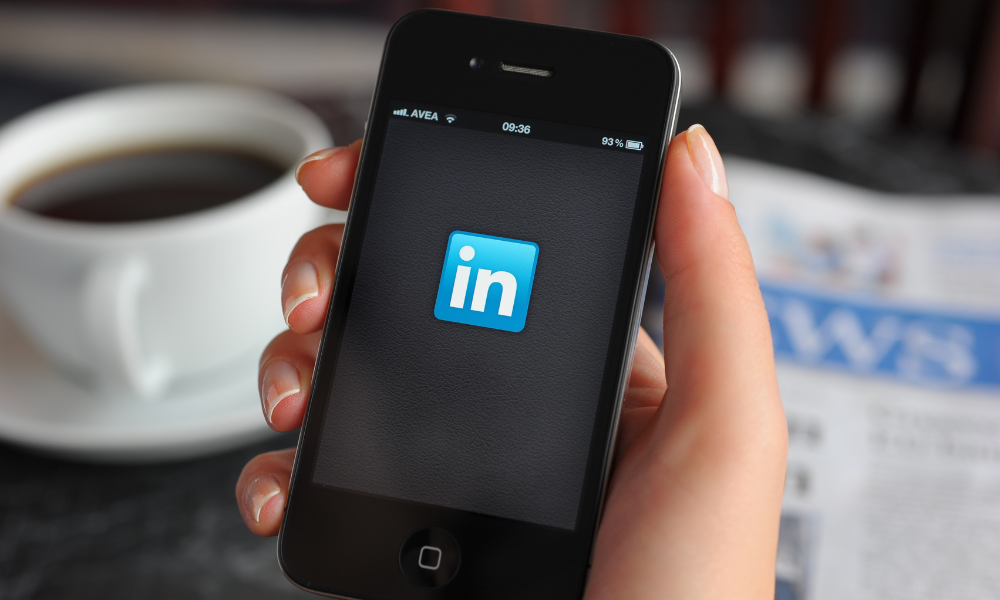
70% of B2B marketers make decisions on LinkedIn

With 830 million worldwide users, LinkedIn is quickly becoming a serious resource for selling and networking. Sue Parker, a leading career, recruitment, and LinkedIn strategist told HRD that “social selling” and “online networking” are now a key part of business development.
Parker believes that organisations need to include LinkedIn usage and expectations into job descriptions and terms of employment as the platform is now a critical tool for a wide range of sectors. She said 70% of B2B marketers make decisions on LinkedIn and the impact of key employees not using the platform can result in loss of business visibility, market awareness and sales enquiries.
“We’re talking commercial visibility, influence, impact, connectivity, networking, if you’re not on LinkedIn, you’re losing credibility. Particularly over the last 5 years, LinkedIn has become a critical need for many roles because it’s a go to resource for B2B marketing for sales, PR and networking,” said Parker.
12.7 million (47%) of Australian’s and 2.4 million (48%) Kiwi’s use the workplace networking platform but Parker said that she hears from business leaders that they’re finding it hard to encourage their employees to take advantage of the platform.
Read more: The most brilliant LinkedIn profiles
“I hear from clients all the time, I should be getting my employees to do it, they don’t do enough of it, I want them to do it, or I should be doing more. So, in organisations at the moment, you don’t get consistency,” said Parker.
“Organisations will have policies in place covering social media use,” Parker continued, “but in some businesses, some industries, in some roles where it really has an impact and a real benefit to that organisation, how can they bring that in the position description, key performance indicators and contracts and write in an expectation that you spend time promoting the organisation on LinkedIn?”
Parker is Australia’s leading LinkedIn strategist, so she’s got very clear opinions, but she was concerned about the legal aspect – Is writing social media usage rules backed up legally? It turns out it is, whilst the LinkedIn profile is owned by the individual, an organisation has every fair and reasonable right to include the use of it to ensure the duties of the role are met.
Read more: LinkedIn’s first CHRO: Supply of qualified talent isn’t going to increase
Sean Melbourne, head legal counsel (employment) at Source Legal told HRD, “For new hires it’s not that difficult, but for existing employees, most organisations may need to go through a process within getting the employees agreement.”
Melbourne explained that 50% of employers fail to have a clause in their contracts that allows for amendments to an employee’s duties. If this clause isn’t present, then the employee would need to agree to an amendment.
Melbourne explains the most important thing to do when writing LinkedIn usage into job descriptions is, “Be as specific as possible about what level of activity workers need to maintain. Whether it's a certain number of postings per week, or certain content that gets posted, or certain level of interaction online, so that it's very clear, because then down the track, if you need to, if you're looking at performance management, then you'll have it very well set out and you can refer back to it.”
So, what about the people in the workforce who might be reluctant to using social media?
Parker concedes that reluctance comes from all areas of the workforce. “It’s not just an age thing,” she said. “It’s not just people over 55 who don’t use LinkedIn, there’s even reluctance from younger people.”
“So, what’s the reluctance about,” she asks. “The reluctance is about, they don’t know how to use it, or they don’t see it as valuable to them,” said Parker who believes these are things that can be taught with training.
Parker adds, “91% of executives rate LinkedIn as a top-quality content source and 80% of B2B leads are generated from the platform but LinkedIn isn’t just for selling or sales, it’s for reputation, credibility, and social proof, for instance, leaders are the major ones that need to be on LinkedIn because we need to build trust in them and having a LinkedIn profile gives you that credibility.”